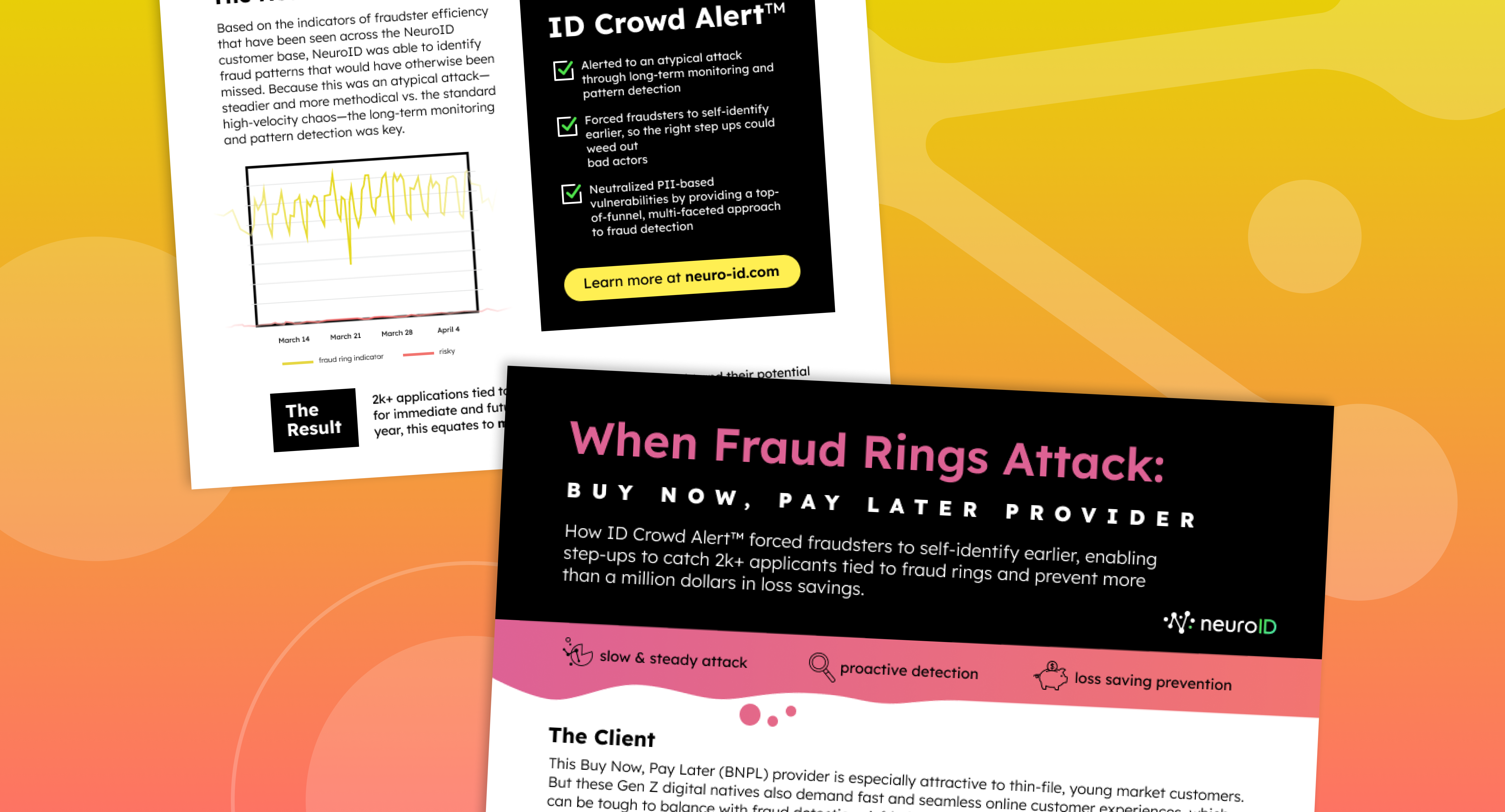
What Are NeuroID Customers Most Worried About When Facing the 2024 Fraud Landscape?
2023 has been a banner year for fraudsters. The revolution in genAI, advanced bots, deep fake spoofs, and vulnerabilities within instant payment infrastructures are making it easier than ever to break through fraud stacks. But that’s not what NeuroID customers are worried about—instead, my team is hearing that our customers are most worried about the bottom-line impact of fraud. The focus is on not just fraud, but the associated cascading costs, and how every solution in their fraud stack impacts overall cost margins.
These “soft costs” of fraud include the extra API calls, the reputation-repairs from breaches, and even the human hours for manual review. And these costs are significant. 75% of businesses said their manual review costs alone increased in 2022. This is on top of the already big hit of fraud on revenue: 59% of digital businesses expected to lose more revenue to fraud YoY, despite growing attention on the problem. With today’s advanced fraud tactics and all the layers of fraud prevention implemented for different attack vectors, operational costs are ballooning beyond all expectations. It all adds up: every $1 of fraud is estimated to actually cost a company close to $5; a nearly 16% increase in cost since 2020.
Coming into 2024, fraud is growing and spending is tightening. Our customers are being told that their fraud solutions must extend beyond their core purpose of preventing fraud loss. The good news for us is it’s an easy way for us to help, as NeuroID behavioral analytics have been proven to do more than just prevent fraud. Our customers are re-evaluating every detail of their fraud stack (including NeuroID!), looking at where they’re spending too much, and deciding what to cut and what to keep. Here are some of the ways they’re using behavioral analytics to improve their bottom-line and fight back on both the soft and hard costs of doing business in 2024.
Expecting More from Your Fraud Prevention Solutions
Loss mitigation is just one piece of the behavioral analytics arsenal. We’re seeing fraud-fighting professionals use NeuroID to create new levels of agility that serve both the business and its customers beyond just preventing fraud loss.
This approach is vital for brands where customer onboarding drives growth. Balancing risk management with customer experience isn’t just about preventing losses—it’s about building trust and loyalty, as well as a smooth onboarding experience, all of which are crucial for long-term success.
NeuroID customers are finding that behavioral analytics offers a whole new way to operationalize their fraud-fighting. Its automated decision-making makes their lives easier and their conversions faster. What does this mean in practice?
- NeuroID behavioral analytics that lives at the top of the onboarding funnel. When customers use the signals for live decisioning via API, this creates a cascading of savings. It reduces the effort for review teams and the number of later API calls: both big cost-savings that reach beyond the fraud mitigation cost center.
- Real-time decisioning instead of retrospection. Rather than using behavioral signals as simple signals within the fraud stack, we’ve seen customers have great success by instead using it as a mile-marker along the customer journey to better understand what’s happening to genuine users, what’s happening to risky users, and what’s happening at the crowd-visualization level. These are the very things that NeuroID was built to provide insight on.
- Real-time decisions that scale. We’ve seen a big push for our customers to use NeuroID decisioning in real-time. That is to say, they are using behavioral analytics at the top of the fraud stack to either approve people and lighten the load of step up, and send people down a review or decline path. And they are doing this in milliseconds. That’s where we see the most impact for our customers, and what makes them the happiest in terms of balancing friction and fraud with growth initiatives. The real-time risk measurement supports the general push to real-time within the FI ecosystem, especially with FedNow soon to put real-time payments front-and-center for consumers (and for fraudsters).
The big takeaway from all of our discussions with customers doing their 2024 planning is that if a fraudulent account is opened, moving those to closure impacts overhead. It ripples across teams—for example, the customer experience team then must spend time and money to help mitigate customer impact. So while a single fraud incident starts out as a seemingly small thing, or even a cost of doing business, it hurts many different facets of the company in exponential ways. NeuroID helps reduce costs by preventing fraudulent accounts from opening, but there’s so much more we can do—and are doing, for our most successful customers.
We’re expecting a 2024 market where the top priority for CEOs continues to be cost management. That’s tough across the board for all teams and all types of headcount. When it comes to fraud, there’s a big price to pay for cutting corners; but there can also be a big benefit to simply re-evaluating your stack and seeing where you can get more out of the tools you already have. We can help.




